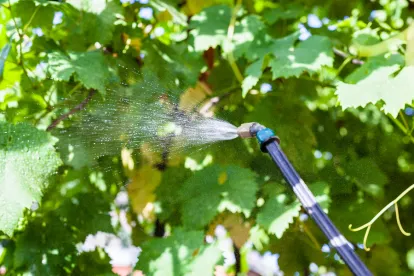On May 8, 2019, the California Environmental Protection Agency (CalEPA) announced that the California Department of Pesticide Regulation (DPR) will be initiating cancellation proceedings of chlorpyrifos. In its press release, CalEPA states that the decision to commence cancellation proceedings “follows mounting evidence, including recent findings by the state’s independent Scientific Review Panel on Toxic Air Contaminants, that the pesticide causes serious health effects in children and other sensitive populations at lower levels of exposure than previously understood.”
DPR’s decision, following years of review in California of chlorpyrifos, is sure to garner significant controversy, comments, and, potentially, litigation.
Background
Chlorpyrifos first entered the comprehensive risk assessment process after being designated by DPR with a “high” priority status in 2011, and some of the DPR documents supporting the current action were issued in 2011.
In December 2015, DPR released a draft risk assessment for public comment. Since the risk assessment identified potential human exposure to spray drift (via inhalation or deposition) as a concern, DPR entered chlorpyrifos in its formal evaluation process to determine the scientific evidence for listing it as a pesticide Toxic Air Contaminant (TAC) (CA Food & Agric. Code §§ 14021-14027).
DPR’s assessments were intended to evaluate chlorpyrifos as a pesticide TAC as defined in California regulations (Title 3, Section 6864). The determination of a pesticide TAC is based on whether the air concentrations, either measured or modeled, exceed the reference concentration (RfC) divided by ten. Under the applicable California statutory provisions, designation of an active ingredient as a TAC is based on an evaluation that assesses the following:
-
The availability and quality of data on health effects;
-
The potency, mode of action, and other relevant biological factors;
-
An estimate of the levels of exposure that may cause or contribute to adverse health effects; and
-
The range of risks to humans resulting from current or anticipated exposure (CA Food & Agric. Code § 14023(a)).
DPR published its draft revised report entitled "Evaluation of Chlorpyrifos as a Toxic Air Contaminant" in December 2017 and an addendum to that report in June 2018. DPR issued its final TAC evaluation in July 2018. The July 2018 evaluation concludes that “chlorpyrifos meets the criteria of TAC designation by using either the developmental neurotoxicity endpoint or the [acetylcholinesterase (AChE)] inhibition endpoint, even without the additional 10x uncertainty factor necessary to account for the fact that the developmental neurotoxicity effects occur at a lower level than AChE inhibition.”
DPR’s findings, public comments, and responses to those comments were reviewed by the Scientific Review Panel (SRP) on TACs. SRP’s findings on chlorpyrifos issued in August 2018 “unanimously concluded that the report, with the revisions requested by the Panel, is based on sound scientific knowledge, and represents a balanced assessment of our current scientific understanding.”
In April 2019, chlorpyrifos was listed in California as a TAC, which triggered a DPR requirement to “develop control measures to protect the health of farm workers and others living and working near where the pesticide is used.” In its press release announcing the cancellation proceedings, CalEPA states that “DPR has determined, in consultation with CDFA, the Office of Environmental Health Hazard Assessment (OEHHA), and the California Air Resources Board (CARB), that sufficient additional control measures are not feasible.”
Commentary
DPR’s announcement is the beginning of what DPR estimates could be a two-year cancellation proceeding, although in reality the process may take even longer. Other actions proposed in conjunction with the cancellation proceeding include:
- DPR to consult with county agricultural commissioners and local air pollution control districts before filing for cancellation.
- DPR to support “aggressive” enforcement of existing restrictions on the use of chlorpyrifos including a ban on aerial spraying, quarter-mile buffer zones, and limiting use to crop-pest combinations that lack alternatives.
- DPR and CDFA to convene a cross-sector working group to identify, evaluate, and recommend safer and more practical and sustainable alternative pest management solutions to chlorpyrifos.
- California Governor Gavin Newsom to propose $5.7 million in new budget funding “to support the transition to safer, more sustainable alternatives.
DPR’s action must also be viewed in conjunction with various federal and state reviews and resulting litigation regarding chlorpyrifos’ continued registration and use. EPA for example, is conducting its own registration review of chlorpyrifos, and was ordered by the U.S. Court of Appeals for the Ninth Circuit to issue, within 90 days of the April 19, 2019, order, its final decision regarding the continued registration of chlorpyrifos.
Other states are also taking action to ban chlorpyrifos, notably Hawaii, which enacted legislation in 2018 to ban the use of chlorpyrifos in Hawaii by 2022; and New York, whose legislature approved bills in April 2019 to ban chlorpyrifos use in New York by 2021.
Stakeholders should review all these issues closely, as these unprecedented decisions are likely to provide multiple opportunities to comment or otherwise participate to ensure that regulatory requirements are indeed being met for cancellation.




 />i
/>i
